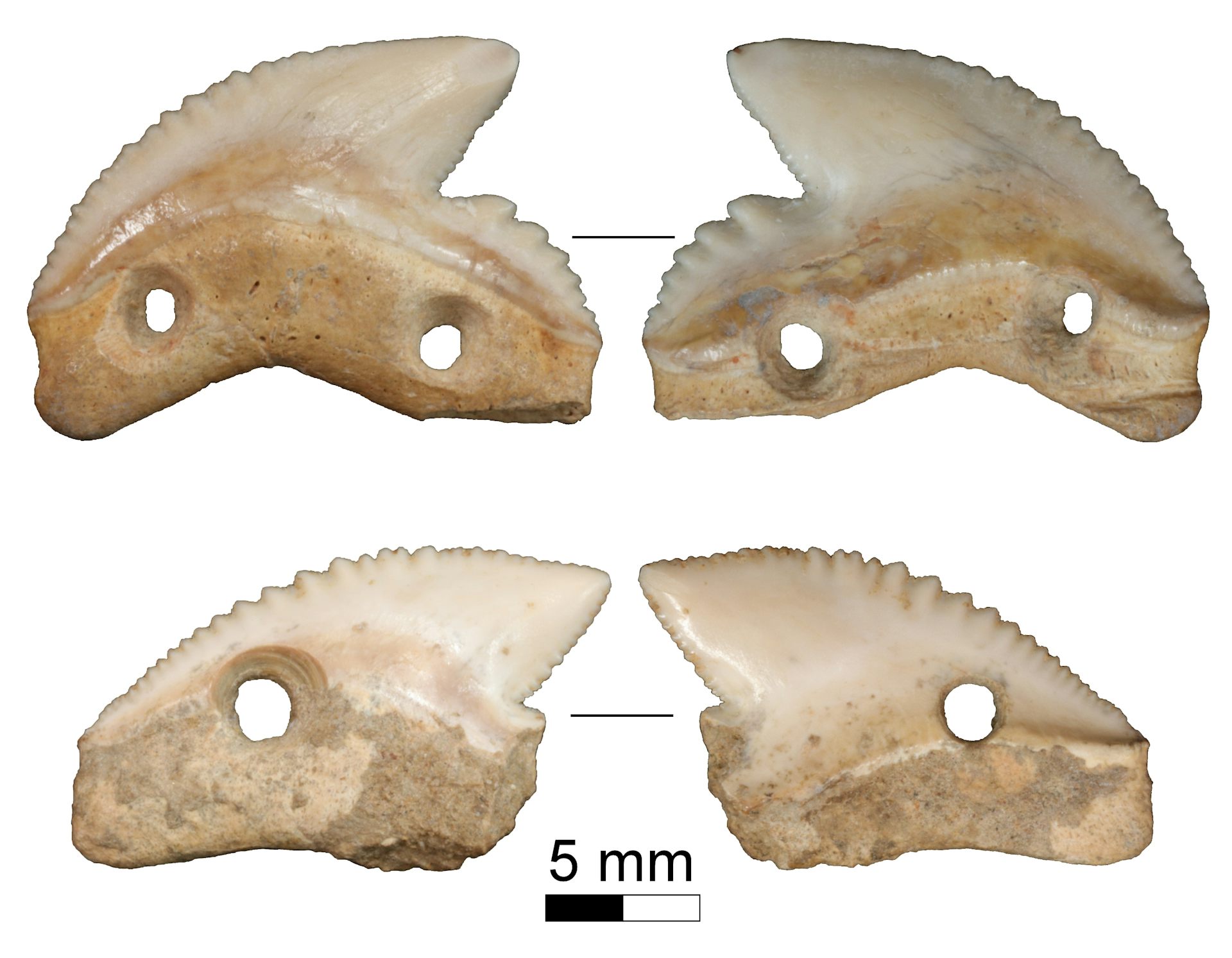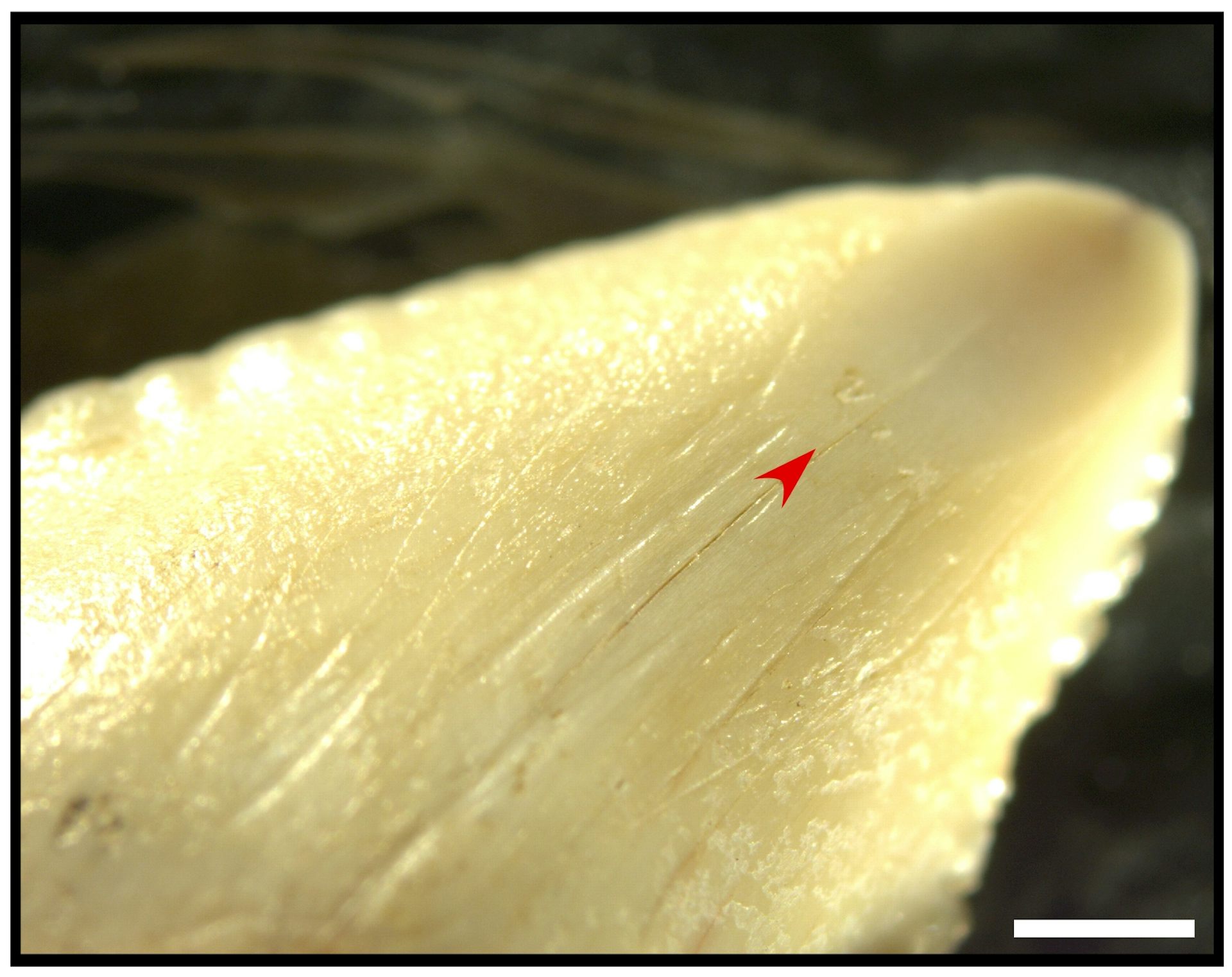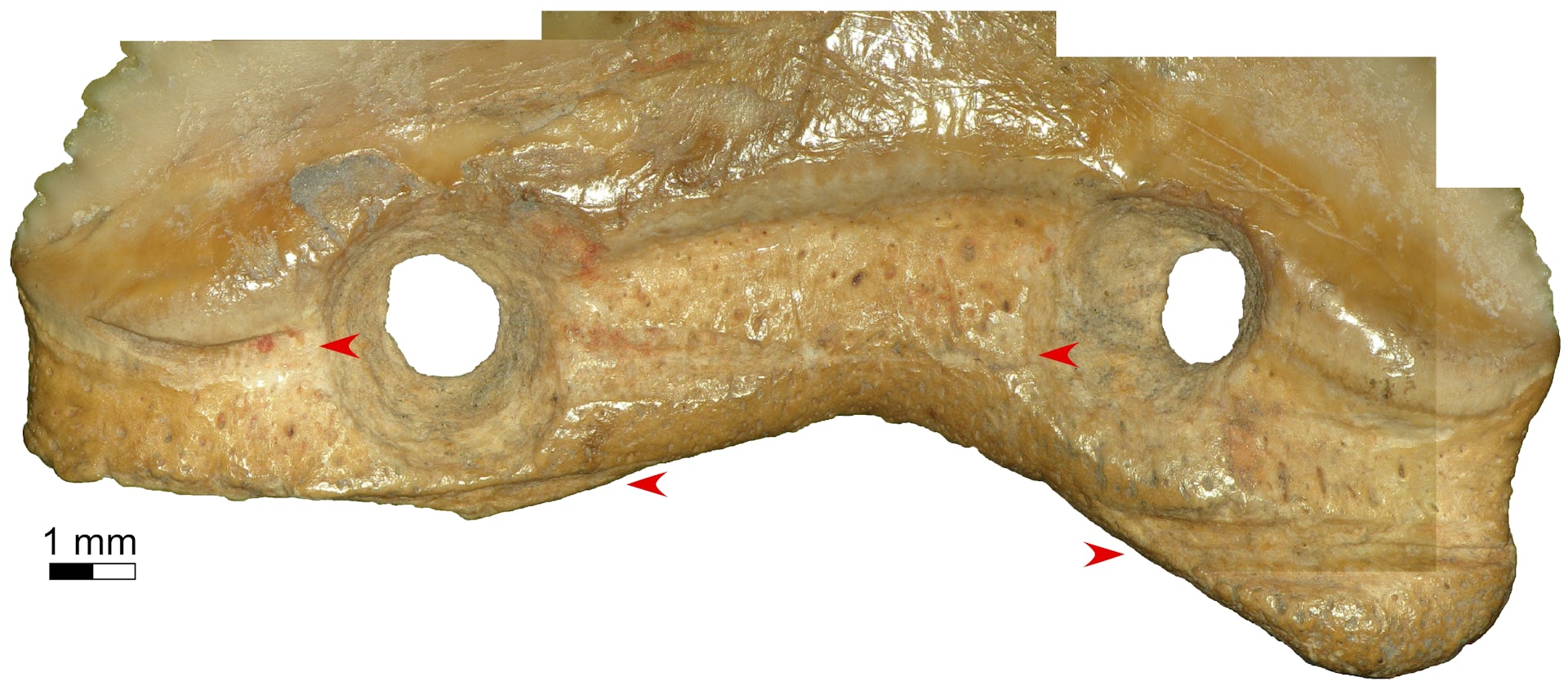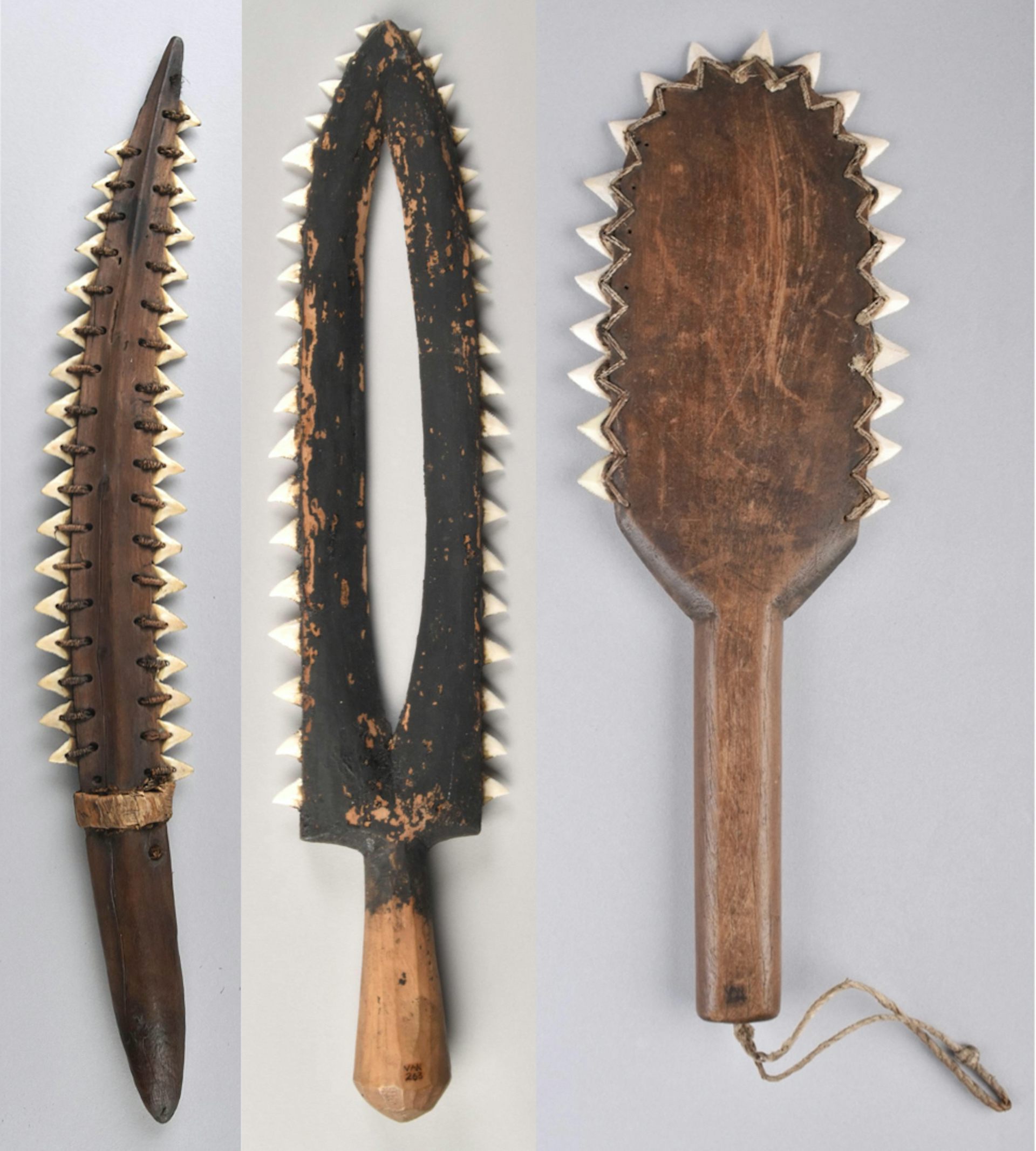Head lice hitched a ride on humans to the Americas at least twice

Male human head louse, Pediculus humanus capitis
Source: Wikipedia (CC BY-SA 2.0)
So, following what passes for creationist logic, creationists should believe that the species-specific, obligate parasite, the head louse, Pediculus humanus capitis, must have been intelligently designed by the creationists' god.
Which begs the questions, why would an omnibenevolent designer:
- design an irritating parasite?
- design its DNA to look like head lice had co-evolved with humans over millions of years from a common ancestor with the louse, Pediculus schaeffi, that parasitises chimpanzees?
Of the three lice that can infest humans, the head louse, Pediculus humanus capitis, the closely-related body louse, P. h. humanus and the more distantly-related pubic louse, Phthiriasis pubis, all have their counterparts in our nearest great ape relatives, in the latter case, the gorilla, and all have genomes that map closely onto the evolutionary history of different human populations.
Humans inherited the ancestor of P. humanus when we diverged from the chimpanzees and, as we lost body hair, it became isolated to our head and facial hair. Later, when we started wearing clothes, our lice diverged into two sub-species, P. h. capitis and P. h. humanus (also called P. h. corporis) respectively. How we managed to acquire the sexually-transmitted pubic or crab louse, Phthiriasis pubis, from an ancestor of gorillas about 3.3 million years ago, is a matter for speculation.
What are the three species of lice that infest humans and what can they tell us about our evolutionary history and the history of different human populations? There are three species of lice that infest humans:Now, a group of scientists led by Marina Ascunce, of the United States Department of Agriculture’s Agricultural Research Service (USDA-ARS), together with colleagues, have used this knowledge to show that head lice came to America twice; once with the first wave of human migration from Siberia via the land bridge, Beringia, which was located between Siberia and Alaska, what is now the Bering Strait, when sea-levels were lower, and again with European colonists. They report these findings in a new study published on November 8 in the open-access journal PLOS ONE.These lice can provide insights into our evolutionary history and the history of different human populations through a field known as "phylogeography." Phylogeography involves studying the genetic variation within a species to understand its historical migration patterns and population dynamics. Lice are highly host-specific, meaning that they have evolved to live on and feed exclusively from humans. The divergence of head and body lice is thought to have occurred when humans began wearing clothing. The body louse adapted to live in clothing and only feeds on the human body when needed, while the head louse remained adapted to living in human hair. Research on the genetic diversity of human lice has contributed to our understanding of human evolution and migration. For example, studies have used genetic data from lice to estimate when humans started wearing clothing, which is linked to the migration out of Africa. The idea is that as humans migrated to different climates, the need for clothing increased, leading to the divergence of body lice from head lice. Additionally, the study of lice genetics has been used to investigate the timing and patterns of human migration and to trace the movement of human populations over time. This research helps scientists map out the historical interactions and separations of human populations, providing valuable information about the peopling of different regions of the world. In summary, the genetic diversity of human lice provides clues about our evolutionary history, including migration patterns, the development of cultural practices like clothing use, and the historical interactions among human populations.
- Pediculus humanus capitis:This is the head louse, which infests the human scalp and hair.
- Pediculus humanus corporis:This is the body louse, which lives and lays its eggs on clothing and only feeds on the human body.
- Pthirus pubis:This is the pubic louse, which infests coarse body hair, especially in the genital area but can also be found in other coarse body hair.
The new study analysed the DNA of 274 human lice from 25 geographic sites around the world. This analysis revealed the existence of two genetically isolated clusters of lice that only rarely interbred. Cluster I had a worldwide distribution, while cluster II was found in Europe and the Americas. There is also a population found in the Americas which appears to be the result of a mixture between lice descended from populations that arrived with the First People carrying cluster I lice and those descended from European (cluster II) lice, which were brought over during the colonization of the Americas.
The researchers also identified a population of lice in Central America which shows a close genetic with lice in Asia. This is consistent with the idea that people from East Asia migrated to North America and became the first Native Americans. These people then spread south into Central America, where modern louse populations today still retain a genetic signature from their distant Asian ancestors.
Abstract The human louse, Pediculus humanus, is an obligate blood-sucking ectoparasite that has coevolved with humans for millennia. Given the intimate relationship between this parasite and the human host, the study of human lice has the potential to shed light on aspects of human evolution that are difficult to interpret using other biological evidence. In this study, we analyzed the genetic variation in 274 human lice from 25 geographic sites around the world by using nuclear microsatellite loci and female-inherited mitochondrial DNA sequences. Nuclear genetic diversity analysis revealed the presence of two distinct genetic clusters I and II, which are subdivided into subclusters: Ia-Ib and IIa-IIb, respectively. Among these samples, we observed the presence of the two most common louse mitochondrial haplogroups: A and B that were found in both nuclear Clusters I and II. Evidence of nuclear admixture was uncommon (12%) and was predominate in the New World potentially mirroring the history of colonization in the Americas. These findings were supported by novel DIYABC simulations that were built using both host and parasite data to define parameters and models suggesting that admixture between cI and cII was very recent. This pattern could also be the result of a reproductive barrier between these two nuclear genetic clusters. In addition to providing new evolutionary knowledge about this human parasite, our study could guide the development of new analyses in other host-parasite systems.As the author point out, analysis of the DNA of host-specific obligate parasites such as lice can help fill in gaps in the fossil record because their evolution is closely linked to their host's evolution, patterns of migration and , in our case, to cultural changes such as wearing cloths. Again, in the case of humans, a clear pattern emerges which maps exactly onto other evidence of migration, isolation and remixing, confirming the value of DNA analysis in this respect. There is a clear line of migration out of Africa into Asia and from Asia into the Americas with the earliest human migrants. The lice Europeans inherited, had been partially isolated in the European Peninsula with their hosts, or possible had evolved with Neanderthals who then passed them on the modern humans, were the able to remix with the Asian/American variety from the 15th century onwards.
 Fig 1. Humans and lice.
Fig 1. Humans and lice.
The map shows the geographic distribution of the modern human head lice included in this study using green dots. Archeological findings of human lice are shown with the figure of a human louse on the map with the corresponding estimated dates from: [3, 5, 6, 21, 22]. In addition, the map reflects the approximate locations of hominin fossil remains and their proposed distribution based on: [23–38]. Each hominin is color coded as follows: Neanderthal (Blue), Denisovan (Black), and Anatomical Modern Humans (Orange).
The outline map was downloaded from Wikimedia: Map author: Maulucioni (https://commons.wikimedia.org/wiki/File:World_map_with_the_Americas_on_the_right.png).
This file is licensed under the Creative Commons Attribution-Share Alike 4.0 International license. https://creativecommons.org/licenses/by-sa/4.0/legalcode.
 Fig 5. Proposed global co-migration of human lice and humans.
Fig 5. Proposed global co-migration of human lice and humans.
Top: Map depicting the collection sites of the human lice included in this study. The color of each circle corresponds to the majority nuclear genetic cluster to which sampled individuals were assigned. Sites with admixed lice are indicated with patterned circles including colors of the two major genetic clusters at that site. The proposed migrations of anatomically modern humans out of Africa into Europe, Asia and the Americas, as well as the more recent European colonization of the New World are indicated with thick grey arrows. Hypothetical human louse co-migrations are indicated with orange and blue arrows. At the bottom, the STRUCTURE plot from Fig 3A corresponding to the assignment of 274 lice from 25 geographical sites at K = 4 (Table 1) is shown.
The outline map was downloaded from Wikimedia: Map author: Maulucioni (https://commons.wikimedia.org/wiki/File:World_map_with_the_Americas_on_the_right.png).
This file is licensed under the Creative Commons Attribution-Share Alike 4.0 International license. https://creativecommons.org/licenses/by-sa/4.0/legalcode.
Ascunce MS, Toloza AC, González-Oliver A, Reed DL (2023)
Nuclear genetic diversity of head lice sheds light on human dispersal around the world.
PLoS ONE 18(11): e0293409. https://doi.org/10.1371/journal.pone.0293409.
Copyright: © 2023 The authors.
Published by [publisher] Open access.
Reprinted under a Creative Commons CC0 1.0 DEED (CC0 1.0 Universal)
So what creationists need to explain, as well as why their putative designer went to the trouble of designing an obligate parasite to live on us, is why it then gave them DNA that looked like they had evolved over millions of years, share a ecommon ancestor with those of chimpanzees and reflected our pattern of migration out of Africa and across the world over a period of several tens of thousands of years.
Save 80.0% on select products from furid with promo code 80BAT9CU, through 11/11 while supplies last.








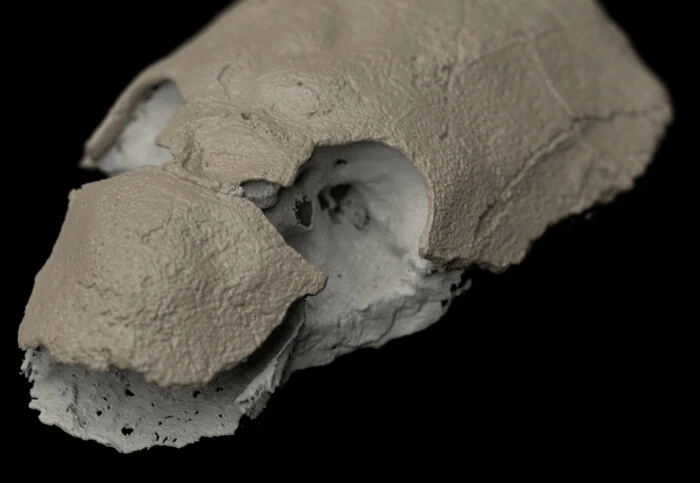


.jpg)









